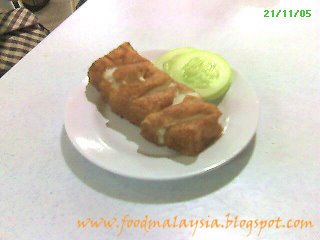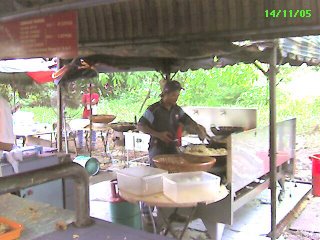
Actually I am just okay with Loh Mee. However, the signboard looks like its a branch of a famous food in Ulu Yam. So, what the hek, just go in for a try lah!

I ordered the famous Loh Mee (in pic, sorry for dark pic as my camera phone lousy) and the recommended fish cake. The Loh Mee preserved with vinegar. The noodle seems like homemade as it was very springy. Not too salty. Just nice. Although this RM4.00 bowl of noodle did not came with lots of stuffs, such as prawns, sotong, abalone, or shellfish, but I finish until the last drop of the soup/ gravy. Maybe next time after you taste it you might tell me is it really taste good, or just my taste bud had problem.

The fish cake was very springy also. I could taste the fresh fish flavor. Not cheap, RM4.00 for a piece, but I think it worth very much of it. There are few other dishes, which looks special. So, let me try it out later and post it for you guys. Or maybe somebody can go there and help us explore?









